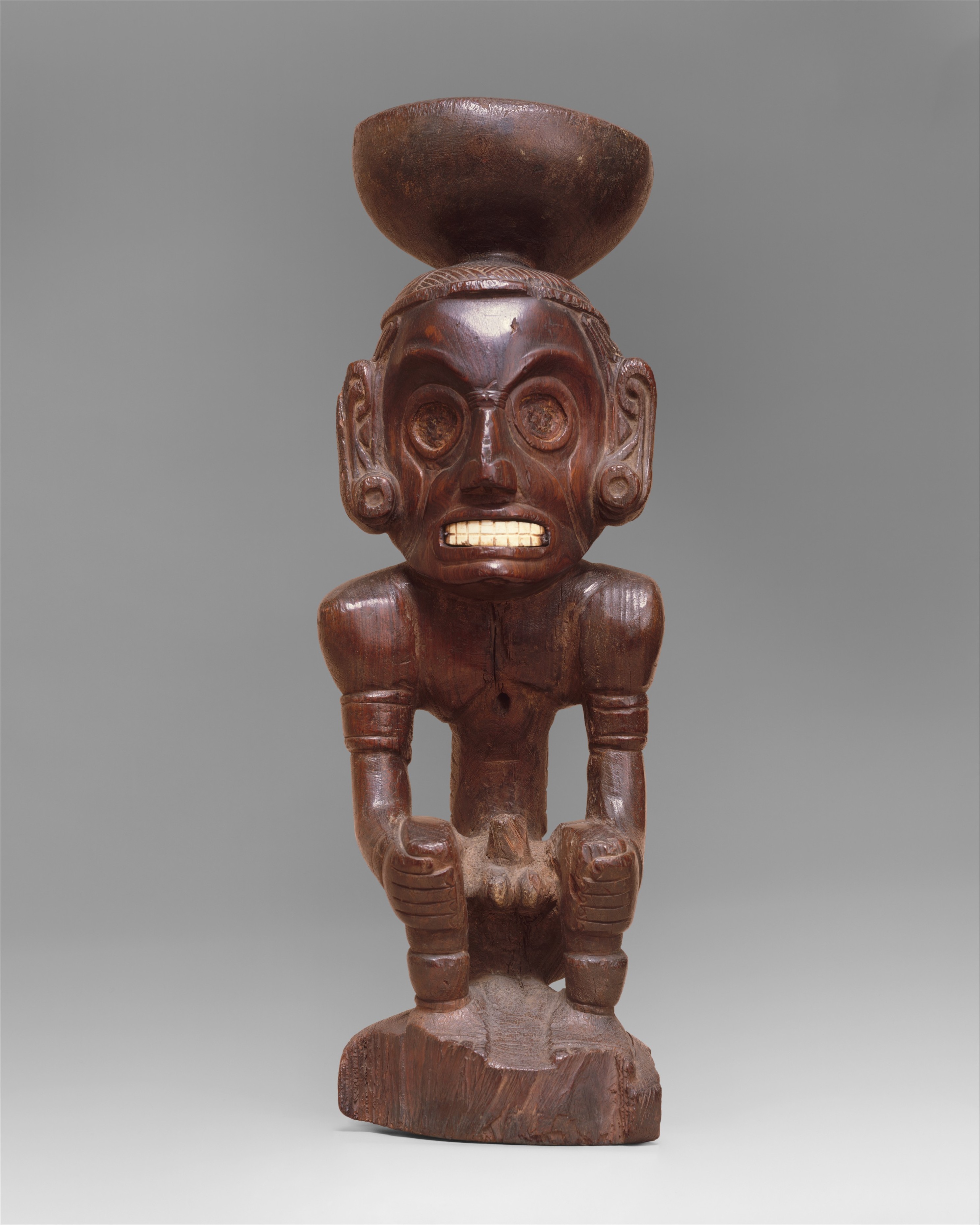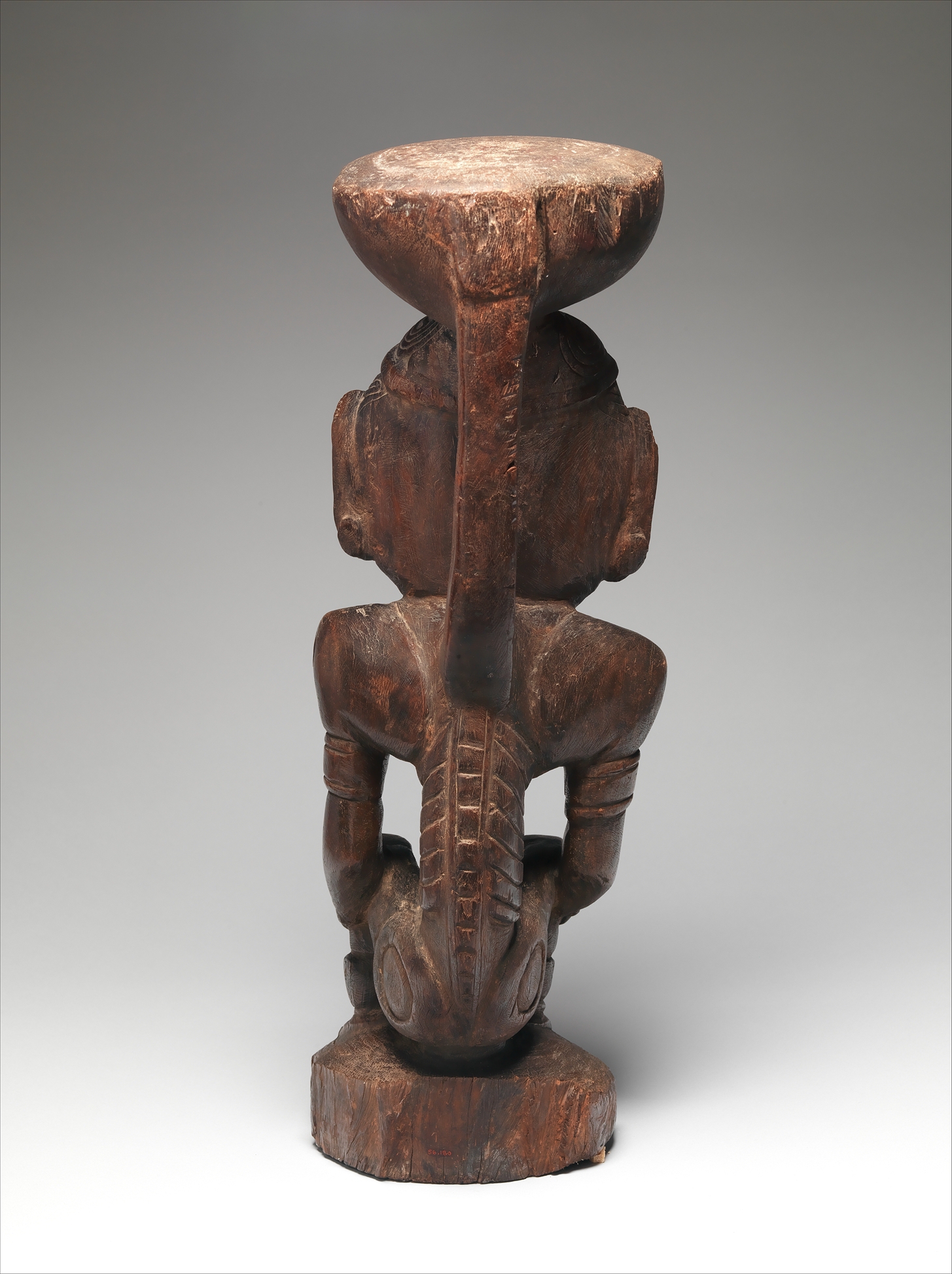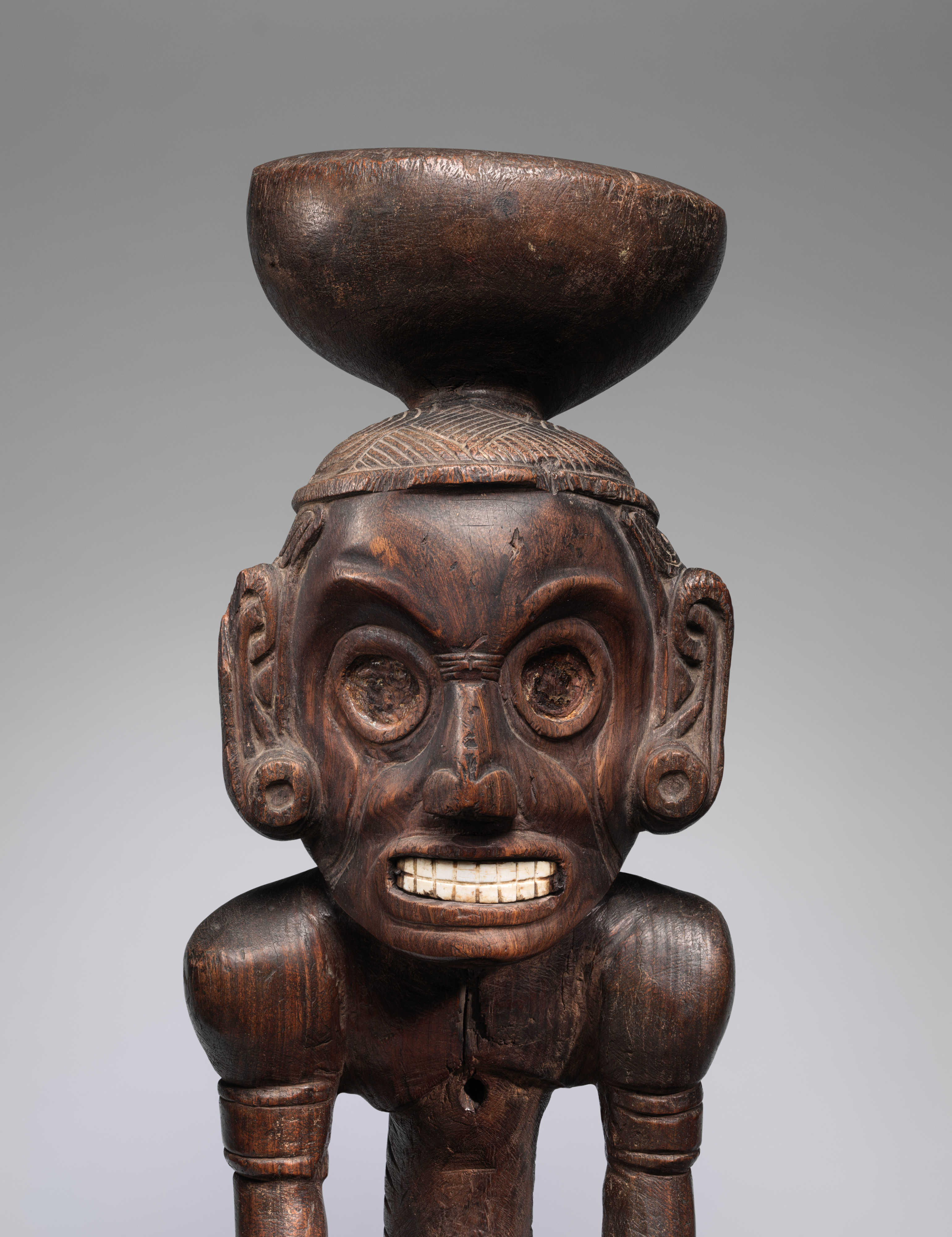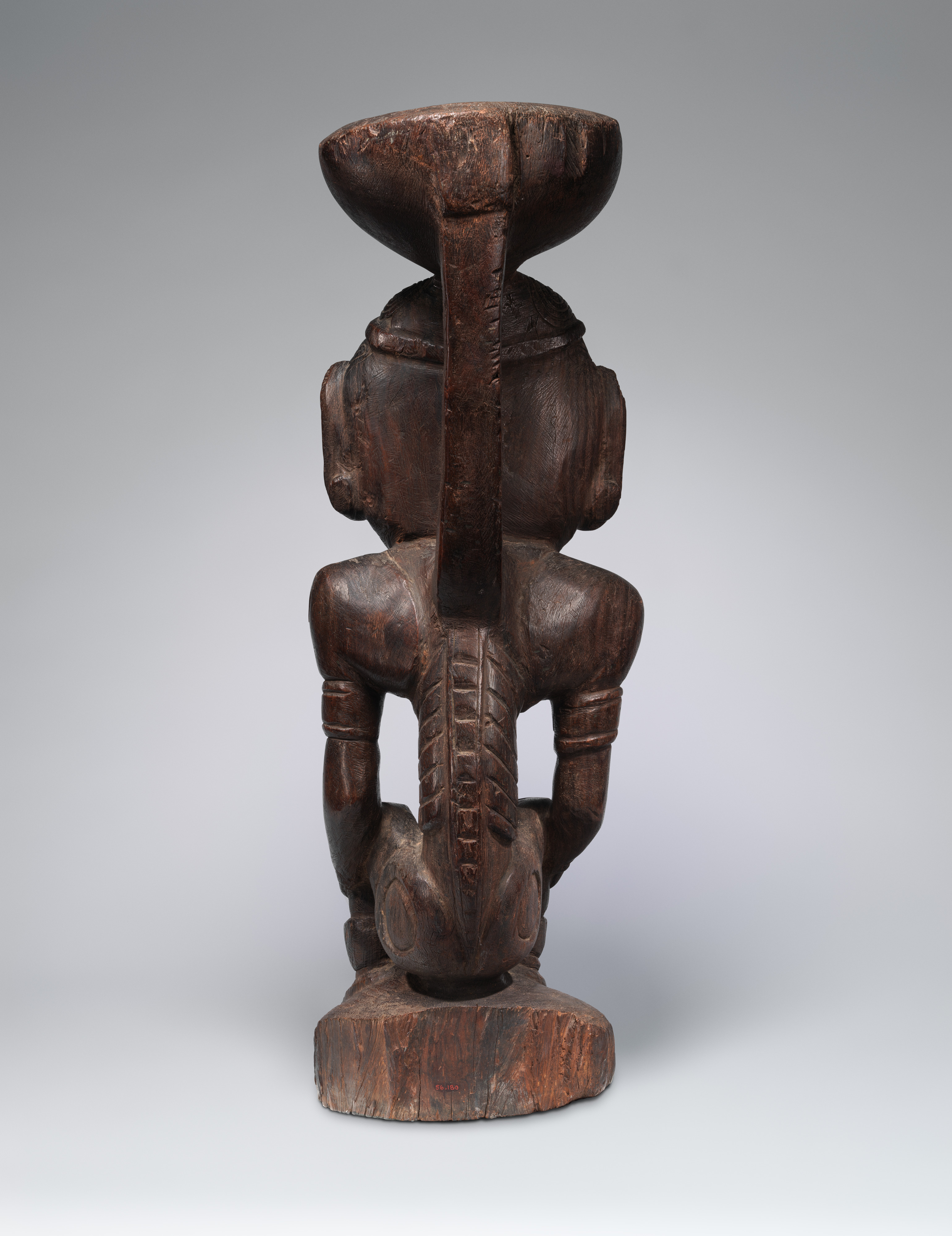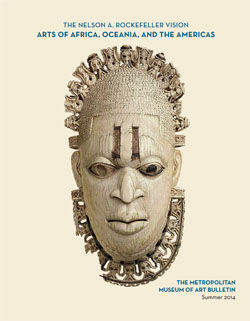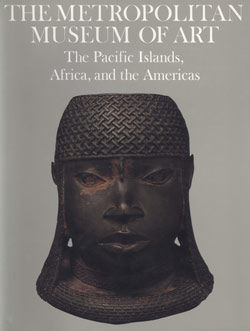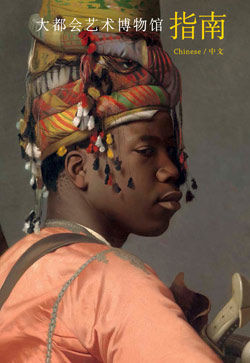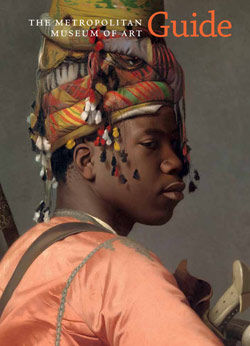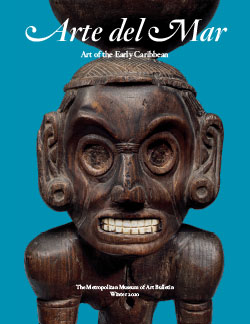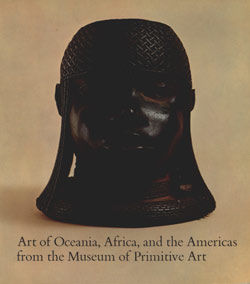Zemí Cohoba Stand
Not on view
Creative sculptural expression for the Taíno peoples was intertwined with spirituality, ceremony, and political power. Spanish accounts describe how zemí figures were used as stands, reliquaries, or personal adornment. This particular zemí was likely used in ceremonies performed at prescribed times throughout the year involving a vegetal entheogen known as cohoba. A ground up hallucinogenic powder or paste would be placed on the top of the stand, and ceremonial participants would inhale the cohoba through snuff tubes. The effects of such ritual acts are visible in the zemí itself: the emaciated look of the figure may represent someone who had been fasting, and watering eyes would have accompanied the inhalation of such substances. The exceptional preservation of this zemí suggests that it was carefully housed and revered, perhaps passed down for centuries. Without evidence of burial, it is likely that the caretakers of this zemí eventually deposited this special figure in a cave; many of the surviving Taíno wooden sculptures have been recovered from cave contexts.
In 1954, Londoner Edna Dakeyne wrote to René d’Harnoncourt at The Museum of Primitive Art to offer the sculpture, which accompanies Edna in a 1938 portrait of her painted by English painter Carel Weight. A project in the UK documenting pre-Hispanic sculptural arts in various museum collections performed AMS radiocarbon dating on the Rockefeller zemí cohoba stand; data from the four dates and a Guaiacum growth model produced by the project yielded a range of the date of creation between A.D. 974–1020.
#1612. Deity Figure (Zemí)
Due to rights restrictions, this image cannot be enlarged, viewed at full screen, or downloaded.
This artwork is meant to be viewed from right to left. Scroll left to view more.


